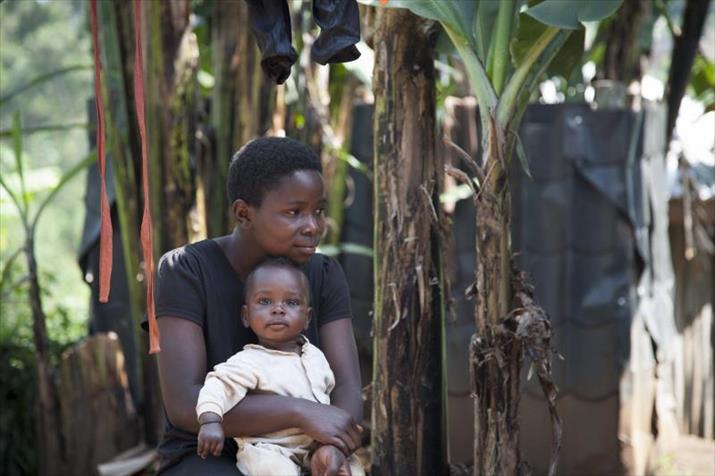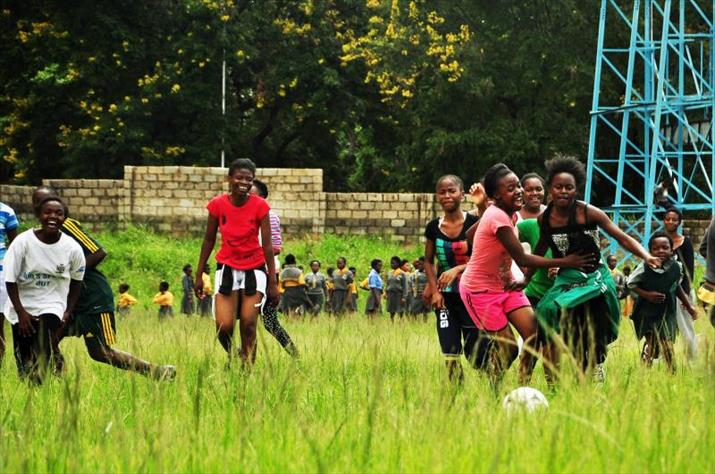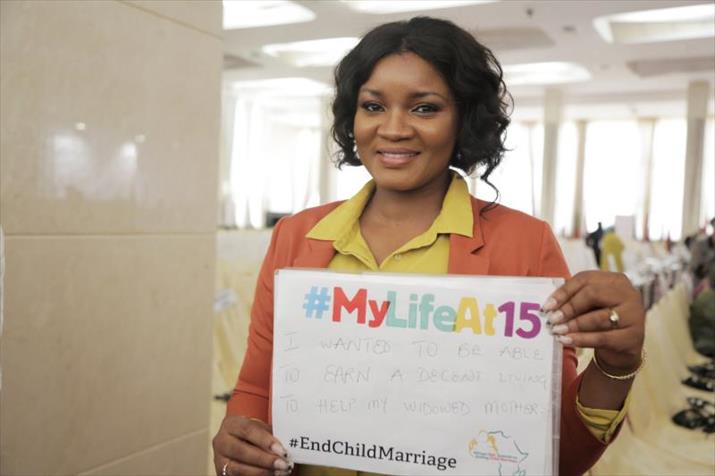|
||||||||||
| Home Nation World Business Opinion Lifestyle ChinAfrica Multimedia Columnists Documents Special Reports |
|
||||||||||
| Home Nation World Business Opinion Lifestyle ChinAfrica Multimedia Columnists Documents Special Reports |
| Africa |
| Bride and Prejudice |
| Despite challenges, Africa strengthens a wide-ranging series of campaigns to address the deep-rooted scourge of child marriage |
| By Edwin Nyirongo and Nuru Ali | VOL. 8 February 2017 ·2017-02-04 |

Theresa Kachindamoto had been appointed inkosi - paramount chief - of Dedza District in central Malawi for only a year when she came across a 13-year-old carrying a crying baby in her arms.
"I asked her to take the baby to her mother to breastfeed and the girl told me the baby was hers," the feisty chief said. "I immediately informed the local leaders, who told me it was a norm in the area. I vowed to end the practice which I saw as ruining the future of children."
Keeping her pledge
She has kept her vow in the face of much resistance from traditionalists who wanted to know why the district had chosen a woman as its chief despite threats to her life and being someone "who wanted to destroy their culture." Since her tenure from 2003, she has had nearly 2,000 child marriages terminated and the girls returned to school.
"As the chief, I am supposed to be the custodian of culture," Kachindamoto said. "However, any cultural practice that hinders development of people in my area is not acceptable."
She dismisses the arguments that poverty is the cause of child marriages. Once a girl is married off, parents are no longer "burdened" by her responsibility. "I tell them educating a girl child is the best way to end poverty, not sending them into marriage," she said.
Two of the girl brides withdrawn from marriage and returned to school through Kachindamoto's efforts are 17-year-old Maria Leonard and 15-year-old Elube Masina. Leonard has a five-year-old boy she delivered in 2012.
"I was impregnated and my parents ordered me to go to the man who made me pregnant," Masina said. Masina, who has a two-year-old baby, got pregnant and was married at 13. She said although she wanted to continue with her education at the time, she failed to do so while married. The two girls are now back in school and both dream of becoming doctors.
Malawi has one of the highest rates of child marriage in the world, where almost one in two girls are married before 18, according to a report by the global research institute International Center for Research in Women. After persistent advocacy by the society, in February 2015, the Marriage, Divorce and Family Relations Law was passed, raising the minimum age of marriage to 18.
However, a constitutional provision, saying girls and boys aged 15 to 18 may marry with parental consent, makes it difficult to crack down on early marriage. Malawi's Minister of Gender, Children, Disability and Social Welfare Jean Kalilani said the government is in the process of amending this part of the Constitution. "The government is looking at child marriages as a child protection issue," Kalilani said.
Deeply rooted
Child marriage remains deep-rooted in African society despite efforts by governments, NGOs and individuals to eradicate the custom and ensure education for girls. "The biggest challenge is knowing that despite the great progress made by some countries across the African region, the number of girls married early is still predicted to double by 2050 due to population growth," said Francoise Moudouthe, head of Africa Engagement Division of Girls Not Brides (GNB), a global alliance lobbying for laws and programs to end child marriage worldwide. "If that happens, Africa will become the region with the highest number of child brides in the world."
According to GNB, more than 700 million women alive today were married as children; 18 percent of them, or 125 million, live in Africa. All African countries face the challenge of child marriage, whether it is high prevalence, such as in Niger (76 percent) or lower, like in Algeria (3 percent). The countries with the highest incidences are Niger, followed by Central African Republic and Chad (68 percent both), according to UNICEF.
Moudouthe emphasized that it is a continent-wide issue: "The African continent is home to 15 out of the 20 countries with the world's highest rates of child marriage. Even if the prevalence of child marriage varies across countries, the drivers are often similar: gender inequality, insecurity, poverty, lack of education and traditional social norms."

Poverty remains a major reason for child marriages across the world - "Girls in Africa living in poor rural households are twice as likely to be married off by 18 compared to girls from the wealthier households," Moudouthe said. Young girls also often bear the brunt of humanitarian conflict or climate change.
"For example, conflict may drive parents to marry off their daughters in the belief that they will be safer married," Moudouthe said, pointing out that the very opposite happens. "What families don't realize is that young married girls are often faced with significant violence at the hands of their husbands."
New approaches
"My name is Grace Masanja and this is my story..." This is how a 14-year-old Tanzanian girl starts narrating how she was sold by her father for 12 cows when she was 12 and how her "husband" beat and raped her for two years. "We are the cash cows that can alleviate the poverty of our families," she says.
Though Masanja is the protagonist in a graphic novel - Cash Cow - by Ugandan artist Christian Mugarura and American writer Marc Ellison, it is based on true incidents in Tanzania, where the Sukuma tribe living in the north still follows the custom of abducting a girl from the streets and "marrying" her forcibly, paying a bridal price to her family to get their approval.
Tanzania also has a high prevalence of child marriage with nearly two out of five girls given in marriage before they turn 18. In rural areas, it is not rare to see children married off at 11. The former marriage law said girls can be married at 14 with parental consent while for boys, the minimum age is 18, adding to the discrimination against the girl child.
Activists are adopting new approaches, such as graphic novels like Cash Cow, highlighting the predicament of young girls forced into marriage and the consequences for society to send the message across all segments.
Another innovative approach
Bella Matiangi (not her real name) is a 17-year-old living in Kilifi, a county in Kenya's Coast Province with an unenviable record. It has the highest number of recorded cases in child marriages and teen pregnancies in the country. Over 200 cases were recorded in 2014 and there were more than 100 cases in the first half of 2015 alone.
In 2014, Matiangi, then 14, was impregnated by an older man and had to drop out of school due to peer ridicule. Though her mother reported it to the school as a child abuse case, it may not have reached the court had it not been for technology.
In partnership with the Kilifi County Director of Children's Service, Plan International Kenya, an international NGO working in the education sector, has launched the mobile app VuruguMapper. A complaint sent to the app is forwarded to district children officers, the director of children services, police and the hospital, who can track the location, reach the victim, and start official proceedings against the perpetrator. In the past, the man would "compensate" the girl's family and the matter would be hushed up. But with VuruguMapper, more than 200 cases have been recorded in Kilifi.
Achievements of 2016
Moudouthe said 2016 had seen global, regional and national achievements in preventing child marriages.
"Globally, we have seen the movement to end child marriage grow significantly. GNB grew to become a global partnership made up of over 650 organizations from more than 85 countries. This means there are more organizations committed and working to address child marriage and enabling girls to fulfil their potential," she said.
Regionally, the African Union has launched a campaign to end child marriage. In 2016, it covered eight countries - Ghana, Eritrea, The Gambia, Senegal, Sierra Leone, Cameroon, Nigeria, and Liberia. So far, the campaign has been rolled out in 18 countries.

Also, the Southern African Development Community has adopted the first Model Law on Child Marriage in the region to address inconsistencies and gaps in national laws which allow child marriage. "This move will require member states to harmonize their national laws to prevent child marriages," Moudouthe said.
Nationally, she said, Zambia, Mozambique and Chad have shown great commitment to ending child marriage by developing national strategies. Besides, there has been strong grassroots activism, resulting in changes to the legal age of marriage.
"For example, in January 2016, two former child brides from Zimbabwe won a Supreme Court case to make child marriage illegal and unconstitutional," Moudouthe pointed out. "In Tanzania, a petition led by the social organization Mischana Initiative resulted in the High Court of Tanzania raising the minimum age of marriage to 18."
What would be the strategy for 2017?
"Making sure national and regional commitments turn into actions," Moudouthe said. "This means supporting our members to help implement national strategies aimed at ending child marriage in countries where they [the strategies] have been developed, advocating for fully resourced and funded national strategies where they do not yet exist, and working with members and donors to ensure effective solutions are scaled up."
The work of social organizations would continue to be critical as "they are the ones who work on the frontlines with girls facing the devastating consequences of child marriage."
(Reporting from Malawi and Kenya)
| About Us | Contact Us | Advertise with Us | Subscribe |
| Copyright Beijing Review All rights reserved 京ICP备08005356号-5 京公网安备110102005860号 |